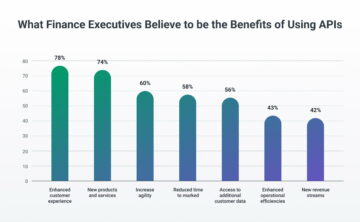
“War is too serious to keep it between the hands of military generals.” These were the profound words spoken by Georges Clemenceau, also known as “The Tiger,” former head of the French government. Interestingly, these words can be extrapolated to the world of digital projects within the financial sector, suggesting that such projects should not be exclusively controlled by technical teams.
In the context of financial digital projects, the essence of Clemenceau’s statement urges us to broaden the involvement and collaboration across various stakeholders. Instead of confining decision-making and implementation solely to technical teams, it is essential to embrace a multidisciplinary approach that incorporates perspectives from financial specialists, customer experience professionals, project managers, and even end-users.
I truly believe that such involvement is very important, and I also believe that this can be optimized by the adoption of LCNC platforms due to the significant advantages that these platforms can offer to non-technical users.
To begin with, restricting digital projects exclusively to the technical staff can result in unforeseen complications and drawbacks, primarily due to the following reasons:
-
Communication Gap: as we know technical professionals have their own jargon and specialized knowledge which can prove quite perplexing for their non-technical counterparts to grasp. This can lead to a communication gap and create misunderstandings between technical and business teams. Involving business users can help to bridge this gap and ensure clear and effective communication and having all teams aligned to the business requirements.
-
Limited Business Expertise: technical teams may not possess the same level of in-depth expertise as the business teams directly engaged in financial operations, risk management, compliance, and customer interactions. Excluding the business teams may result in overlooking valuable insights and perspectives crucial to the success of the delivered products.
-
lack of agility and responsiveness: business users can provide timely feedback, valuable insights and better understanding of the immediate needs facilitating faster adaptation to market and client changes. Involving them in the decision-making process will ensure swift responses to evolving market dynamics and guarantees alignment of the final product with the business goals.
-
Change resistance and Lack of Ownership: excluding business users from the design and the implementation of new projects can create a perception that the solutions are being imposed upon them. Consequently, this may trigger resistance to change and a lack of ownership. Conversely, involving business users from the project’s outset fosters a sense of ownership and a high level of engagement, resulting in improved outcomes.
-
Siloed Approach and lack of Collaboration: by excluding business users, a siloed approach can emerge, with business needs and IT solutions developed separately. This can result in solutions that fail to fully address actual requirements or deliver optimal value. Conversely, involving non-technical users promotes collaboration and ensures that the development process incorporates diverse perspectives while aligning with business objectives.
For the above reasons, I believe the involvement of non-technical from the beginning of any digital project is very important. By adopting this inclusive strategy, financial digital projects can gain a broader perspective, leverage diverse expertise, and ensure that the resulting solutions cater to the specific needs and preferences of all relevant parties. This collaborative effort is likely to lead to more successful outcomes, increased efficiency, and enhanced user satisfaction.
I also firmly believe that the most effective approach to engage non-technical users is through the adoption of Low-Code/No-Code (LCNC) platforms, given the numerous advantages they offer.
In fact, LCNC platforms can be considered a cure-all when it comes to designing and launching new projects. Beyond their evident technical benefits, these platforms provide ample opportunities for non-technical users to actively participate in the development of new products:
-
Empowerment of non-technical users: Low-code and no-code platforms empower non-technical employees and enable them to take an active role in the development process. With their user-friendly visual interfaces and pre-built components, these platforms eliminate the need for extensive coding knowledge. As a result, non-technical users can actively contribute to building and customizing applications tailored to their specific needs.
-
Increase agility: Amidst the swiftly changing business requirements, teams must be agile and adept at responding to evolving scenarios while capitalizing on potential opportunities. Low-code and no-code platforms enable non-technical employees to swiftly prototype and validate their ideas. Equipped with intuitive visual tools and pre-built components, users can effortlessly assemble and configure these components. This facilitates the creation of functional prototypes, enabling them to gather feedback and iterate rapidly based on end users’ input. This iterative approach fosters innovation, as ideas can be validated and refined in a significantly shorter timeframe.
-
Increased Autonomy: By leveraging low-code and no-code platforms, non-technical employees can experience increased autonomy in managing their requirements. They can create, modify, and iterate on applications themselves, reducing dependency on IT departments and accelerating the delivery of solutions without having to navigate intricate development procedures.
-
Foster collaboration and communication: Low-code and no-code platforms foster and promote seamless collaboration between non-technical employees and IT professionals. They provide a common ground where they can collaborate. Non-technical employees can effectively communicate their requirements, provide feedback, and actively engage in the development process. This collaboration leads to better alignment between business needs and final technical solutions, resulting in more effective and well-suited outcomes.
It is important to highlight that involving business users does not imply excluding technical users. On the contrary, adopting a multidisciplinary approach and harnessing the advantages of LCNC platforms can provide technical teams with additional support and buffers. As a result, they can concentrate on tackling more intricate and challenging technical issues, while still benefiting from the valuable insights and contributions of non-technical stakeholders.
I highly recommend that financial institutions explore the numerous benefits offered by LCNC (Low-Code, No-Code) platforms, and, of course, ensure the active involvement of non-technical users in the implementation of new digital projects.
As a non-technical and a business expert, I had the opportunity to witness all the aforementioned advantages through our company’s LCNC platform,
VEGGO which empowers financial institutions to develop custom, user-friendly applications, facilitating rapid digital transformation and enabling them to stay competitive in the fast-paced global landscape.
- SEO Powered Content & PR Distribution. Get Amplified Today.
- PlatoData.Network Vertical Generative Ai. Empower Yourself. Access Here.
- PlatoAiStream. Web3 Intelligence. Knowledge Amplified. Access Here.
- PlatoESG. Automotive / EVs, Carbon, CleanTech, Energy, Environment, Solar, Waste Management. Access Here.
- PlatoHealth. Biotech and Clinical Trials Intelligence. Access Here.
- ChartPrime. Elevate your Trading Game with ChartPrime. Access Here.
- BlockOffsets. Modernizing Environmental Offset Ownership. Access Here.
- Source: https://www.finextra.com/blogposting/24857/embracing-non-technical-involvement-with-lcnc-platforms-in-financial-digital-projects?utm_medium=rssfinextra&utm_source=finextrablogs
- :is
- :not
- :where
- 1
- a
- above
- accelerating
- across
- active
- actively
- actual
- adaptation
- Additional
- address
- adept
- Adopting
- Adoption
- advantages
- agile
- aligned
- aligning
- All
- also
- amidst
- an
- and
- any
- applications
- approach
- ARE
- AS
- At
- based
- BE
- begin
- Beginning
- being
- believe
- benefiting
- benefits
- Better
- between
- Beyond
- BRIDGE
- broaden
- broader
- Building
- business
- by
- CAN
- capitalizing
- cater
- challenging
- change
- Changes
- changing
- clear
- client
- Coding
- collaborate
- collaboration
- collaborative
- comes
- Common
- communicate
- Communication
- company
- competitive
- compliance
- components
- concentrate
- Consequently
- considered
- context
- contrary
- contribute
- contributions
- controlled
- conversely
- course
- create
- creation
- crucial
- custom
- customer
- customer experience
- Decision Making
- deliver
- delivered
- delivery
- departments
- Dependency
- Design
- designing
- develop
- developed
- Development
- digital
- Digital Transformation
- directly
- diverse
- diverse perspectives
- does
- drawbacks
- due
- dynamics
- Effective
- effectively
- efficiency
- effort
- effortlessly
- eliminate
- embrace
- embracing
- emerge
- employees
- empower
- empowers
- enable
- enabling
- end
- engage
- engaged
- engagement
- enhanced
- ensure
- ensures
- equipped
- essence
- essential
- Ether (ETH)
- Even
- evident
- evolving
- excluding
- exclusively
- experience
- expert
- expertise
- explore
- extensive
- facilitates
- facilitating
- fact
- FAIL
- fast-paced
- faster
- feedback
- final
- financial
- Financial institutions
- Financial sector
- Finextra
- firmly
- following
- For
- Former
- Foster
- fosters
- French
- from
- fully
- functional
- Gain
- gap
- gather
- given
- Global
- Goals
- Government
- grasp
- Ground
- guarantees
- had
- Hands
- Harnessing
- Have
- having
- head
- help
- High
- Highlight
- highly
- HTTPS
- i
- ideas
- immediate
- implementation
- important
- imposed
- improved
- in
- in-depth
- Inclusive
- incorporates
- increased
- Innovation
- input
- insights
- instead
- institutions
- interactions
- interfaces
- intuitive
- involvement
- involving
- issues
- IT
- IT professionals
- jargon
- Keep
- Know
- knowledge
- known
- Lack
- landscape
- launching
- lead
- Leads
- Level
- Leverage
- leveraging
- likely
- management
- Managers
- managing
- Market
- May..
- Military
- modify
- more
- most
- multidisciplinary
- must
- Navigate
- Need
- needs
- New
- new products
- No-Code Platforms
- non-technical
- numerous
- numerous benefits
- objectives
- of
- offer
- offered
- on
- Operations
- opportunities
- Opportunity
- optimal
- optimized
- or
- our
- Our Company
- outcomes
- own
- ownership
- participate
- parties
- perception
- perspective
- perspectives
- platform
- Platforms
- plato
- Plato Data Intelligence
- PlatoData
- possess
- potential
- preferences
- primarily
- procedures
- process
- Product
- Products
- professionals
- profound
- project
- projects
- promote
- promotes
- prototype
- prototypes
- Prove
- provide
- rapid
- rapidly
- reasons
- recommend
- reducing
- refined
- relevant
- Requirements
- Resistance
- responding
- responses
- restricting
- result
- resulting
- Risk
- risk management
- Role
- s
- same
- satisfaction
- scenarios
- seamless
- sector
- sense
- separately
- serious
- should
- significant
- significantly
- solely
- Solutions
- specialists
- specialized
- specific
- spoken
- Staff
- stakeholders
- Statement
- stay
- Still
- Strategy
- success
- successful
- such
- support
- SWIFT
- swiftly
- tackling
- tailored
- Take
- teams
- Technical
- that
- The
- the world
- their
- Them
- themselves
- These
- they
- this
- Through
- Tiger
- timeframe
- timely
- to
- too
- tools
- Transformation
- trigger
- truly
- understanding
- unforeseen
- upon
- urges
- us
- User
- user-friendly
- users
- VALIDATE
- validated
- Valuable
- value
- various
- very
- war
- we
- were
- when
- which
- while
- will
- with
- within
- without
- witness
- words
- world
- zephyrnet












